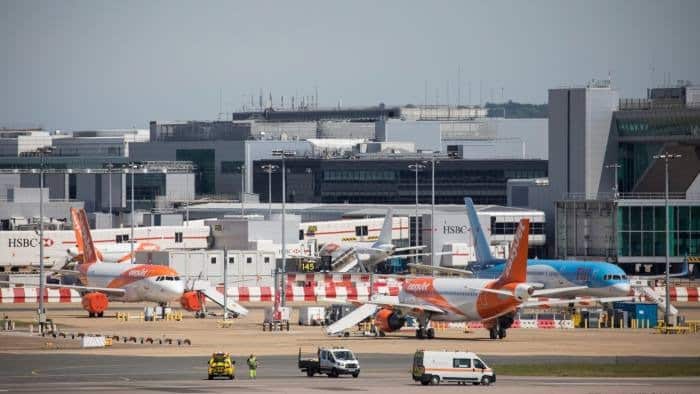Raac found in Heathrow and Gatwick airports as university building forced to close
The UK government ignored advice to identify buildings that contain the potentially dangerous lightweight concrete that has now been found in more than 100 schools.
An independent advisory group recommended in 2020 that buildings containing reinforced autoclaved aerated concrete (Raac) be included on a high-risk register created by the government’s Building Safety Act.
This advice was not followed and the government’s classification of “higher risk buildings” only includes structures more than seven stories high that contain two residential units, according to the Act.
If the advice from the group, backed by the Institute of Structural Engineers, had been listened to, there would have been a legal requirement for all buildings containing Raac to be added to a public registry by October 1 of this year. Owners would then be legally obliged to report any structural safety issues as well as put in place measures to prevent building safety risks.
Government departments are now scrambling to work out how prevalent the lightweight concrete is across the public and private sector amid reports of its presence in schools, hospitals, prisons and office blocks.
A government spokesperson said the higher-risk building regime “targets buildings where a structural or fire safety failure poses the greatest risk of death or serious injury to a significant number of people”.
“These reforms complement longstanding duties on all building owners to address safety risks in their properties in a proportionate way,” it added. “If properly designed, manufactured, in good condition and with good bearing, Raac installations are considered safe.”
Two of the UK’s busiest international airports, Heathrow and Gatwick, told the Financial Times that they had detected the sometimes-fragile concrete on their estates.
The University of East Anglia has also said it will close its Norfolk and Suffolk Terrace accommodation until further notice in response to the government’s Raac guidance, affecting hundreds of students.
“Not knowing if a building contains weak or deleterious material is clearly a concern, especially if it is used or accessed by the public,” said Matthew Byatt, president of the Institute of Structural Engineers. “Raac is a known risk material that needs to be assessed to determine whether it is safe, and if necessary to have mitigations put in place.”
“If Raac is present, it could be at risk of collapse with little or no warning,” he added.
The Building Safety Act, drawn up to tackle shortcomings in existing building safety following the Grenfell Tower fire, came into force in 2022.
Asked about the government’s decision on the definition of “higher risk buildings”, Byatt said: “We fully accept that it is the elected government that has to determine policy and therefore what becomes law.”
Another person linked to the institute said he believed the government had made the right call in not classing buildings containing Raac as “higher risk”, given that it would have created an onerous obligation on building owners to try to identify whether or not their building contained the material.
“It would be good to have a registry,” they said, but it would have been “very hard to legislate”.
The porous concrete was used most commonly in public buildings from the mid-1950s to mid-1990, but it was also used in the construction of commercial private sector buildings such as offices, supermarkets and warehouses. Heathrow and Gatwick were both privatised in the 1980s when the UK government publicly listed the British Airports Authority (BAA).
The airports, which together handle nearly 100mn passengers a year, have been aware of the substance since before its use sparked a national scandal last week.
Raac was first found in Heathrow’s Terminal 3 last year, prompting temporary remedies to be introduced while the airport prepared a permanent solution.
The furore over schools led Heathrow to assess its management of the material. It has since concluded that its original plan remains suitable.
In its written advice provided to the department of levelling up, housing and communities as it drew up its Building Safety Bill, the advisory group Structural-Safety stated that “it is our view that the proposed definition for a ‘higher-risk building’ should be extended to allow buildings which contain specific high-risk components or materials”. It highlighted specifically “buildings which contain reinforced autoclaved aerated concrete (Raac) planks”.
Engineers have been quick to note the integrity of buildings that contain Raac is of most concern in structures that have been poorly maintained, which is most commonly the case across the public estate where investment in upgrades and repairs have been inconsistent.
Chris Goodier, professor of construction engineering and materials at Loughborough university, and one of the UK’s few experts on Raac, said the presence of the material poses much less of a threat at airports than at schools and hospitals.
“There are people there running the place seven days a week with a big full-time maintenance team whose only job is to keep it running 24/7,” he said.
Gatwick airport said: “We have a register of locations containing Raac on the airport campus, which are closely monitored through a regular comprehensive structural inspection regime.
“Our most recent inspection in June 2023 did not present any concerns and we will continue to monitor on a regular basis,” it added.



